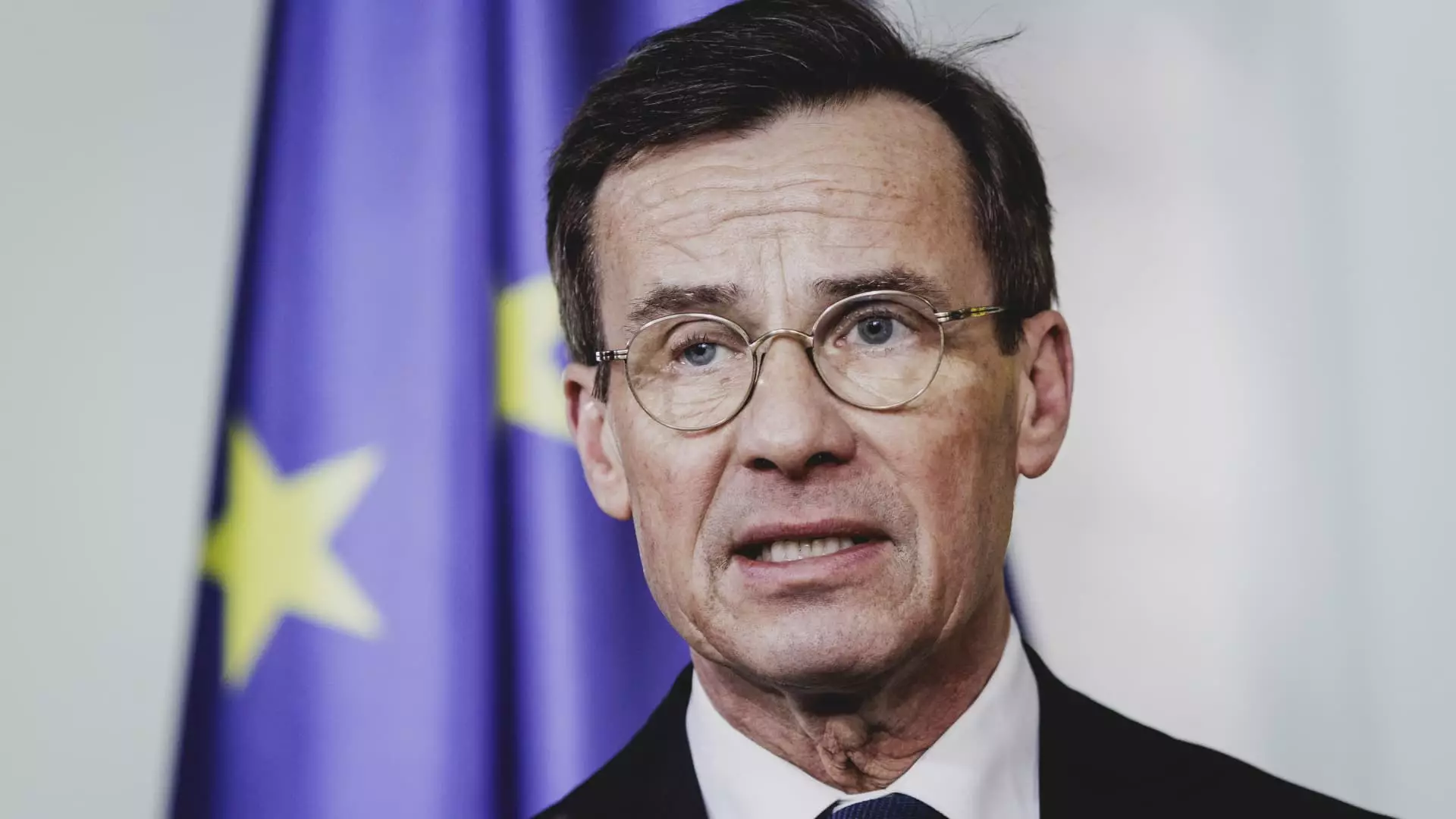Recently, a stark warning was issued by Swedish Prime Minister Ulf Kristersson during the Techarena event in Stockholm. He cautioned that Europe’s stringent regulations on artificial intelligence (AI) could transform the continent into a “museum,” highlighting a grim concern that Europe might become obsolete in a world racing ahead in technological advancement. Such a statement is not merely alarmist; it’s a rallying cry for European leaders to reassess their regulatory frameworks and foster a more conducive environment for innovation.
Kristersson’s assertion comes in the wake of alarming trends over the past two decades, where both the American and Chinese economies outpaced Europe significantly. This growth differential paints a worrying picture for European competitiveness on the global stage. If actions are not taken, Europe faces the prospect of stagnation while other regions thrive, leading Kristersson to stress the urgent need for reforms aimed at invigorating the EU’s technological landscape.
In a recent display of commitment to AI, French President Emmanuel Macron unveiled a staggering 109 billion euros (approximately $113.7 billion) for AI investments. This ambitious initiative is backed by both international and domestic stakeholders, including prominent companies like Iliad, Orange, and Thales. The scale of this commitment starkly contrasts with other regions’ investments, most notably the $500 billion AI initiative championed by former President Donald Trump.
In tandem with Macron’s promises, European Commission President Ursula von der Leyen announced an allocation of 200 billion euros ($208.6 billion) aimed at bolstering AI development within the EU. These investments symbolize a shift in recognizing the importance of AI for economic growth, and they signify an emerging consensus that Europe needs to invest heavily to remain competitive.
Despite the surge in investment, there remains a critical dialogue regarding the regulatory environment governing AI in Europe. U.S. Vice President JD Vance, who spoke at the Paris AI Action Summit, articulated concerns that excessive regulatory focus could stifle innovation. He emphasized the need for a collaborative international regulatory framework that facilitates the growth of AI technologies rather than suppressing them.
Vance’s statements highlight a growing frustration among tech executives who argue that Europe’s regulatory approach has been excessively cautious, potentially hampering the continent’s ability to innovate. The advent of the EU’s AI Act serves as a pivotal moment, marking an attempt to safeguard against AI-related risks while simultaneously drawing criticism for its perceived rigidity. There is a palpable fear that if Europe continues along the path of stringent regulation, it could alienate talent and drive innovation to more welcoming shores.
The concerns raised by Kristersson, Vance, and several European leaders reflect an unsettling truth; innovative companies are increasingly finding themselves constrained by regulatory uncertainties. Entrepreneurs face challenges in accessing not just capital but also the talent necessary to succeed in a fast-evolving tech landscape. Reports of companies relocating to the U.S. due to regulatory pressures illustrate a disturbing trend that could stifle Europe’s technological ambitions.
This situation generates a complicated paradox: while regulations aim to protect citizens and society from potential risks associated with AI and other emerging technologies, they can inadvertently create a hostile environment for businesses and innovators. Kristersson rightly pointed out that, for Europe to effectively navigate the new geopolitical realities, it must encourage an ecosystem that supports businesses and innovation rather than hampers them.
To ensure a thriving future in AI, European leaders must strike a careful balance between regulation and the facilitation of growth. This may include revisiting the AI Act and adopting a more flexible approach that encourages companies to experiment, collaborate, and innovate without excessive bureaucratic hurdles.
Creating a regulatory environment that embraces the potential of AI while simultaneously addressing safety concerns could very well position Europe as a leader in the global AI landscape. As technology continues to permeate every facet of life, the question remains: will Europe embrace this opportunity for growth, or will it languish under an avalanche of regulation? The answer may very well shape the continent’s economic future.
The sentiment echoed by leaders across Europe signals a critical juncture for the region. The pathway ahead must be navigated with clarity and purpose, focusing on fostering an environment where innovation is not just tolerated but celebrated. By doing so, Europe can avoid the museum metaphor and strive to be a dynamic participant in the technological evolution of our time.

